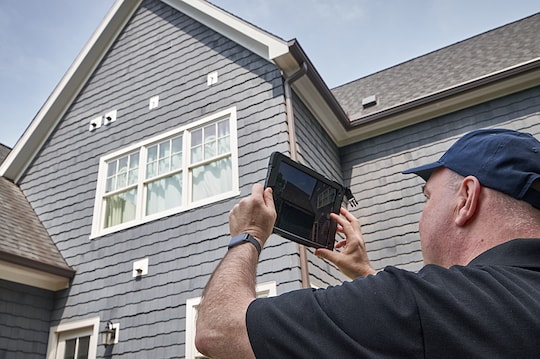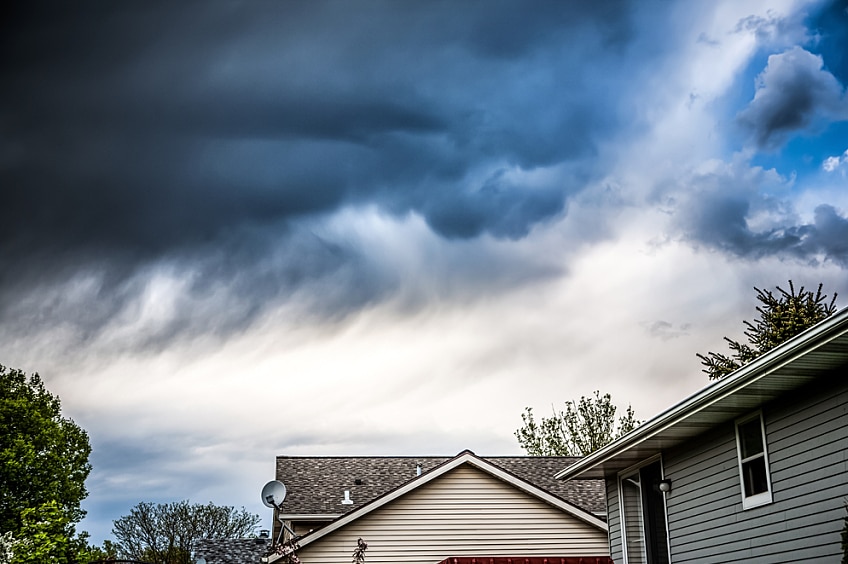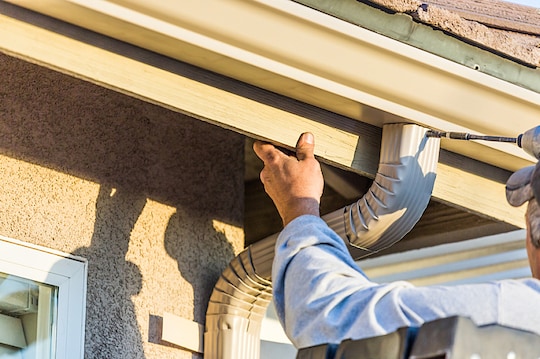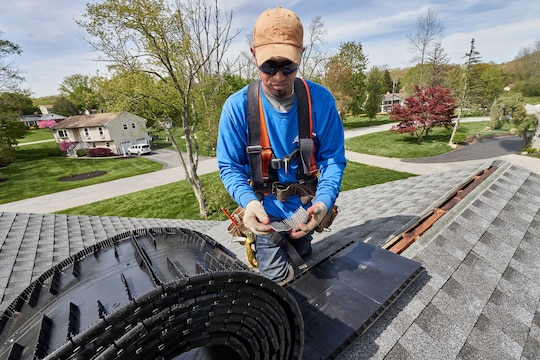
Has a hurricane caused roof damage on your home? 2020 saw a record-breaking 30 named hurricanes, causing more than $51 billion in damages.
Preparation can begin before any hint of a storm. Here's how to make a plan for your roof, and identify hurricane roof damage should you get hit by a storm.
How to Identify Damage to Your Roof
If your roof has been damaged in a hurricane, it's important to act quickly—but remember to always put safety first. Powerful hurricane winds can cause broken power lines, unsafe property conditions, walls of water that strike land called storm surges, and flooding. Whether you're evacuated or sheltered at home during the storm, follow local emergency guidance before taking action.
Once it's safe to return home or go outside, grab your camera. Start your inspection inside, then walk your home's perimeter outside. You can use binoculars or your camera's zoom option to view your roof safely from the ground. Wear the proper safety shoes and avoid walking through standing water indoors, or flooded areas outdoors. Photograph any issues you suspect could be water damage to your roof caused by leaks and the storm. Here are more specifics on how you can conduct your inspection:
1. Look inside the house
An interior home inspection can help reveal hurricane roof damage. Look for and photograph signs of damage, such as:
Wet spots on interior ceilings or walls, as sometimes water will travel down the walls from the roof
Sagging areas or water stains in the attic, cracks in plywood or drywall, or light coming through from the exterior
2. Walk around the outside of the house
Visually inspect the exterior of your house after you've verified it's safe to walk your property. Be on the lookout for fallen trees, power lines, and other safety hazards. Keep in mind that visible issues can be a sign of other damage, including damage to your roof.
Snap photos of exterior home damage, including:
Damage to gutters, gutter guards, or downspouts
Storm-damaged siding, window sills, architectural features, or garage doors
Broken windows or air conditioners
Damage to the deck or porch
3. Search from the ground
Your first instinct may be to climb on your roof and assess the damage up close. However, this is safest in the hands of professionals. This is for your safety as well as the safety of your roof—mounting a potentially damaged roof without safety equipment can lead to injuries and exacerbate existing roof damage.
From the ground, search for and photograph roof damage clues such as:
Missing, torn, broken, or lifted shingles
Lifted, torn, damaged, or missing vents, chimney caps, drip edges, or skylight flashing
Debris on your roof
- Damage to soffits and fascia
New abnormalities in your roof's appearance
Take Action on Hurricane Damage
If you suspect you have roof damage, or would like to be sure that your roofing system is still in tact following a storm, contact a trusted roofing professional for a roof inspection. A roof inspection will put your mind at ease and get you on the path to repairing the damage. A roofing pro can also tarp your roof to prevent leaks until repairs commence.
Hiring a trusted, insured, and licensed roofing professional such as contractors certified by GAF* can help ensure you end up with a reliable roofer and avoid fraudulent operators.
If your region is in a state of emergency, the US Army Corps of Engineers also offers Operation Blue Roof. This program installs roof sheeting at no cost to help keep people safely in their homes until a reputable roofing contractor can make repairs.
Insurance Claims
In many cases, homeowners insurance covers hurricane storm damage. Read up on your policy before storm season and extend coverage as needed if you live in a hurricane-prone region.
If your roof has suffered hurricane damage, here are five simple steps for making an insurance claim:
- Inform your insurance company.
- Work with your insurance company to document any and all damage. You might even consider including a roofing professional in this process.
- Ask questions and make sure you understand the insurance claim decision process.
- If your claim is approved, you will receive a payment from the insurance company.
- After your roof is repaired or replaced, ask if you are eligible for discounts on your insurance premiums.
Learn more about each of these steps by visiting the GAF Storm Response resource site.
Keep Your Roof Damage-Free
You can't prevent hurricanes, but you can prepare your roof and property for the possibility of one impacting your home.
Here are some ways to ready your roof for hurricane season:
Upgrade to shingles, like Timberline® HDZ™ Shingles, that may be eligible for enhanced wind warranty coverage. When installed with the required combination of GAF accessory products, Timberline® HDZ™ Shingles are covered by the WindProven Limited Wind Warranty**, an industry first roofing shingles wind warranty with no maximum wind speed limitation.
Trim back trees and foliage that could cause roof damage in high winds.
Clean and secure gutters.
Have loose shingles or other roof concerns addressed by a professional roofer. A strong and healthy roof will be better able to withstand hurricane season.
Understand your roof warranty terms, and have your paperwork in order.
Learn more hurricane preparedness tips at Ready.gov.
Want to prepare your roof for hurricane season or repair hurricane roof damage? Check out the GAF Storm Response resources and contact a contractor cerfitied by GAF in your area**.
* Contractors enrolled in GAF certification programs are not employees or agents of GAF, and GAF does not control or otherwise supervise these independent businesses. Contractors may receive benefits, such as loyalty rewards points and discounts on marketing tools from GAF for participating in the program and offering GAF enhanced warranties, which require the use of a minimum amount of GAF products.
** 15-year WindProven™ limited wind warranty on Timberline® HDZ™ Shingles requires the use of GAF starter strips, roof deck protection, ridge cap shingles, and leak barrier or attic ventilation. See GAF Roofing System Limited Warranty for complete coverage and restrictions. Visit gaf.com/LRS for qualifying GAF products.




